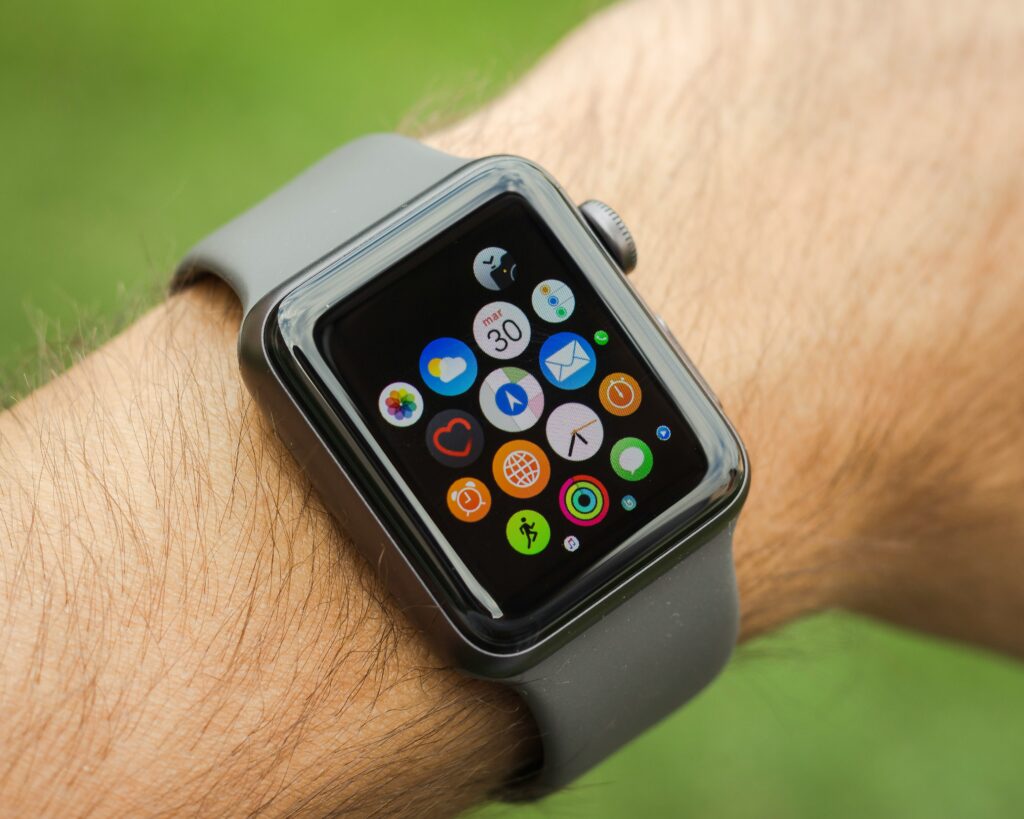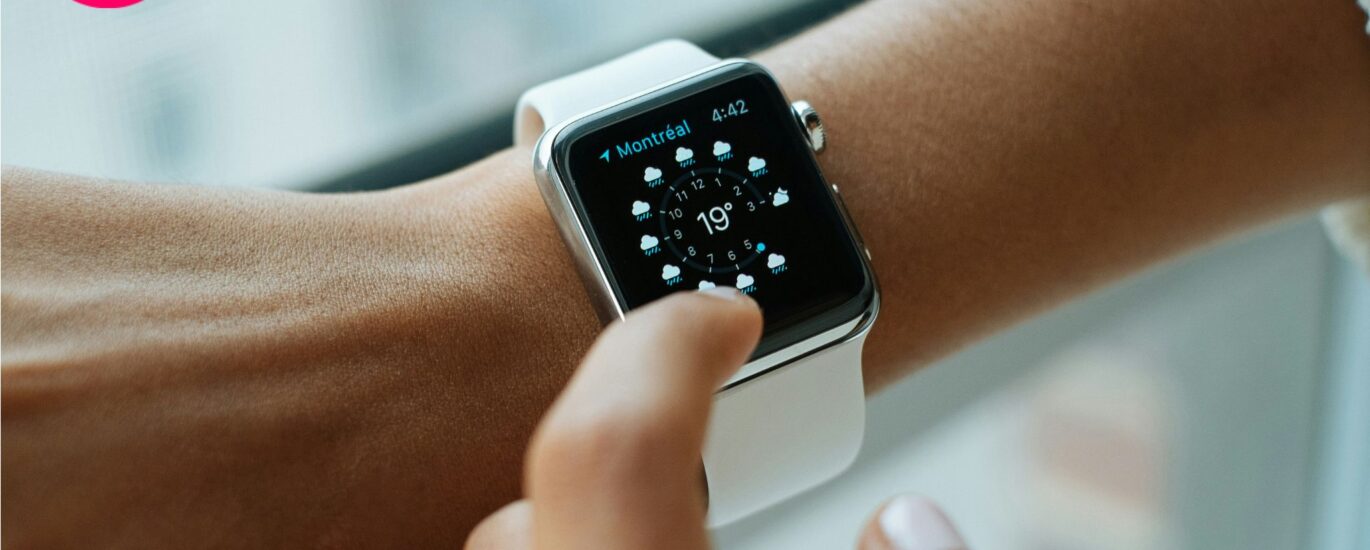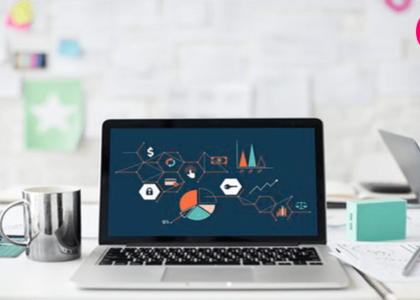Wearable technology has become a defining trend in 2025, reshaping how people interact with digital devices. From smartwatches to fitness trackers, wearables offer convenience and personalized experiences that fit seamlessly into daily life.
As the demand for these devices grows, mobile app development plays a crucial role in unlocking their potential. Businesses now have an opportunity to create innovative apps that enhance functionality and meet the evolving needs of tech-savvy consumers.
How Wearable Devices Are Transforming the Tech Industry
The wearable technology market is experiencing significant growth, with projections indicating a market size of $170.91 billion by 2025, reflecting a compound annual growth rate (CAGR) of 20.8% from 2016 to 2025.
This expansion is driven by increasing consumer interest in health and wellness tracking technologies, advancements in sensor technology, and the demand for personalized user experiences.
Notably, the adoption of wearable devices varies across regions; for instance, as of March 2024, 57% of survey respondents in India owned wearable devices, while in the United States and Canada, ownership stood at 41%.
These statistics underscore the transformative impact of wearable devices on the tech industry, highlighting their growing integration into daily life and the evolving opportunities they present for businesses and developers.
Essential Features for Mobile Apps on Wearables
Developing mobile apps for wearable devices requires a focus on key features that optimize the user experience. From user-friendly design to seamless integration with sensors, these features are crucial for creating successful wearable apps.
User-Centric Design for Small Screens
Developing apps for wearables demands a user-focused approach due to the small screen sizes. Interfaces must be clean, intuitive, and efficient, minimizing the need for complex user inputs.
Features like voice commands, gesture controls, and one-touch interactions enhance practicality and ease of use, ensuring a seamless experience.
Integration with Sensors and Hardware
Wearable devices are equipped with advanced sensors capable of tracking various metrics such as health data, environmental conditions, or physical activities. Apps that effectively gather, process, and present this data offer significant value.
Fitness apps can track steps, heart rate, and sleep patterns, while healthcare applications can monitor vital signs for medical purposes. Leveraging these hardware capabilities helps create apps that are both functional and engaging.
Seamless Connectivity Across Devices
Wearables often rely on smartphones or other platforms for full functionality. Apps must ensure seamless communication through Bluetooth, Wi-Fi, or other connectivity protocols.
Real-time data syncing and notifications are critical for creating a cohesive and integrated user experience, enabling users to move effortlessly between their devices.
Energy Efficiency and Battery Optimization
Energy efficiency is vital for wearable apps due to the limited battery capacity of the devices. Developers should optimize apps to consume minimal power by reducing background processes, optimizing data transmission, and using energy-efficient coding practices. These measures help extend the device’s battery life while maintaining performance.
Security and Privacy Protections
With wearables handling sensitive user data, such as health information and personal details, robust security measures are essential. Features like encryption, user authentication, and secure data storage ensure the privacy of user information.
Additionally, compliance with regulations and best practices for data protection builds trust and ensures the app meets industry standards.

Technology Trends Shaping Wearable App Development
As wearable devices continue to advance, new technologies are shaping the future of app development. These trends, from AI integration to enhanced connectivity, offer businesses opportunities to enhance app functionality and user engagement.
Artificial Intelligence and Machine Learning
AI and machine learning are revolutionizing wearable app development by enabling smarter, more personalized user experiences. Wearables equipped with AI can analyze large volumes of data in real time, providing insights such as fitness recommendations, health alerts, or predictive analytics.
Voice recognition and natural language processing are also becoming standard, allowing users to interact with devices more intuitively.
IoT Integration for Connected Ecosystems
The Internet of Things (IoT) has expanded the capabilities of wearable devices by creating interconnected ecosystems. Wearable apps are now designed to seamlessly communicate with smart home systems, vehicles, and workplace technologies. This integration enhances user convenience, such as wearables controlling home appliances or syncing with office systems to monitor productivity.
Advancements in Battery Life and Energy Efficiency
Technological improvements in wearable hardware have led to better battery life and energy efficiency, directly impacting app performance. Developers can now design apps that run longer and perform better without draining the device. Innovations in low-power chips and adaptive energy management systems allow wearables to handle more complex tasks without compromising usability.
Enhanced AR and VR Capabilities
Wearable devices are beginning to incorporate augmented and virtual reality functionalities, opening up new possibilities for app development. These trends are especially relevant in industries such as healthcare, education, and entertainment, where immersive experiences can improve learning, training, or engagement.
Focus on Data Security and Privacy
As wearables collect sensitive user data, new technologies focus on enhancing data security. Features like biometric authentication, encrypted data transfers, and blockchain-based security models are being adopted to address privacy concerns and ensure regulatory compliance.
Challenges in Wearable App Development
Developing mobile apps for wearable devices comes with its own set of challenges. These challenges can affect the functionality, user experience, and overall success of the app. Some of the most common hurdles include:
Hardware Limitations and Compatibility
Wearables have limited processing power, memory, and storage capacity compared to smartphones. This can restrict the app’s complexity and performance. Additionally, ensuring compatibility across multiple wearable platforms with varying hardware specifications can be time-consuming and challenging.
Data Synchronization and Connectivity Issues
Wearables often rely on smartphones or other devices to function fully. Maintaining smooth, real-time data synchronization can be difficult, especially with inconsistent connectivity or battery life limitations.
Battery Life Constraints
Wearables have small batteries, which means developers need to optimize apps for energy efficiency. Apps that consume too much power can quickly drain the device’s battery, resulting in a poor user experience.
User Privacy and Security Concerns
Given that wearables often track sensitive data like health metrics, ensuring the security of this information is a critical challenge. Developers must integrate robust encryption and secure data storage practices to protect user privacy and comply with regulations.
User Interface Design
Designing intuitive, user-friendly interfaces for small screens is a constant challenge. Developers must ensure that the app is functional and easy to navigate without overwhelming the user with information or complex interactions.
Opportunities for Businesses in Wearable App Development
The rise of wearable devices presents significant opportunities for businesses to tap into new markets and enhance customer engagement. Companies can develop apps that cater to health, fitness, and wellness trends, offering personalized experiences that appeal to tech-savvy consumers.
Wearable apps also provide businesses with valuable data insights, enabling them to tailor services, products, and marketing strategies more effectively. Industries such as healthcare, retail, and entertainment can leverage wearables to improve customer experiences, streamline operations, and enhance brand loyalty.
Furthermore, businesses that embrace wearable app development can position themselves as leaders in an emerging market, gaining a competitive edge by offering innovative solutions that meet the evolving needs of consumers.

Best Practices for Developing Wearable Apps
Building an effective wearable app requires following best practices that prioritize performance, security, and user satisfaction.
Prioritize Simplicity and Usability
Given the small screen sizes and limited input options on wearable devices, simplicity is key. The app interface should be intuitive, with minimal distractions and easy-to-navigate menus. Focus on delivering core functionalities efficiently, using simple gestures, voice commands, or one-touch actions to enhance user experience.
Optimize for Battery Life
Battery life is a major concern for wearable devices. To optimize energy consumption, apps should minimize background processes, reduce frequent data updates, and use power-efficient algorithms. Implementing features such as adaptive syncing or low-power modes can help extend battery life while maintaining app performance.
Ensure Seamless Device Integration
Wearable apps often depend on seamless communication with smartphones or other devices for full functionality. App developers must ensure smooth integration with various platforms and maintain data syncing in real-time. This includes considering connectivity protocols like Bluetooth and optimizing data transfer to prevent delays or disruptions in user experience.
Test for Different Devices and Use Cases
Wearable apps should be tested across multiple devices to ensure compatibility and consistent performance. Consider the variety of wearable devices on the market, each with different screen sizes, hardware capabilities, and operating systems. Testing should also cover diverse use cases, from fitness tracking to health monitoring, ensuring the app performs well in real-world scenarios.
Focus on Security and Privacy
Wearable devices handle sensitive personal data, making security a priority. Implement strong encryption methods, secure data storage, and ensure compliance with data protection regulations. Incorporating biometric authentication or multi-factor authentication adds an extra layer of security, helping protect user data from unauthorized access.
Conclusion
As wearable technology continues to evolve, businesses have a unique opportunity to develop innovative apps that enhance user experiences and open new revenue streams. By focusing on simplicity, energy efficiency, seamless integration, and security, mobile app developers can create apps that meet the needs of modern consumers. Adopting best practices and staying updated with emerging trends will help businesses stay competitive in this rapidly growing industry.





